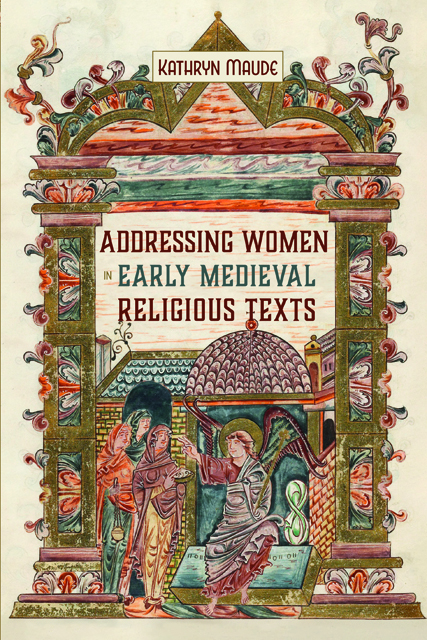Book contents
- Frontmatter
- Dedication
- Contents
- Acknowledgements
- Abbreviations
- Introduction: Behealde ge wif: Addressing Women in Early Medieval England and Scotland
- 1 Addressing Laywomen in Old English Sermons
- 2 Addressing the Recluse in Aelred’s De institutione inclusarum and Goscelin’s Liber confortatorius
- 3 Addressing Holy Women in the Life of Christina of Markyate and the Life of Margaret of Scotland
- 4 Addressing Nuns in Goscelin’s Hagiography for Wilton and Barking Abbeys
- Conclusion: Plebs ecclesiastice discipline: Addressing Women to Include and Exclude
- Bibliography
- Index
- Gender in the Middle Ages
Conclusion: Plebs ecclesiastice discipline: Addressing Women to Include and Exclude
Published online by Cambridge University Press: 14 January 2023
- Frontmatter
- Dedication
- Contents
- Acknowledgements
- Abbreviations
- Introduction: Behealde ge wif: Addressing Women in Early Medieval England and Scotland
- 1 Addressing Laywomen in Old English Sermons
- 2 Addressing the Recluse in Aelred’s De institutione inclusarum and Goscelin’s Liber confortatorius
- 3 Addressing Holy Women in the Life of Christina of Markyate and the Life of Margaret of Scotland
- 4 Addressing Nuns in Goscelin’s Hagiography for Wilton and Barking Abbeys
- Conclusion: Plebs ecclesiastice discipline: Addressing Women to Include and Exclude
- Bibliography
- Index
- Gender in the Middle Ages
Summary
I end as I began, with a sermon. In the early twelfth century, a nun sat down at Nunnaminster in Winchester to copy out a sermon for Christmas Day, bearing in mind the mixed congregation of nuns, monks and clerics who would hear it. In her hand, that sermon, De natale Domini, begins with a tripartite individual address to fratres dilectissimi [most beloved brothers], virgines [virgins], and clerici [clerics], and goes on to address all three groups collectively, as ‘plebs ecclesiastice discipline’ [people of ecclesiastical discipline]. The large manuscript containing the sermon, now Bodley MS 451, was designed for public instruction and probably read aloud by the nuns.
As a sermon collected in a Nunnaminster manuscript by a self-named scriptrix [female scribe], De natale Domini provides a view of women as a key part of the monastic familia, working together with clerics and monks to celebrate one of the most important moments in the Christian calendar. As with the expansive definition of Christian community seen in the Old English Blickling 10 and HomM 8 discussed in Chapter 1, the Latin De natale Domini, through the address plebs ecclesiastice discipline, includes nuns as one part of a wider Christian community, expected to practice the same virtues and avoid the same sins as their monastic and clerical colleagues. However, two central sections of the sermon (paragraphs 4 and 5 in Hall’s edition) are addressed only to fratres karissimi [most beloved brothers]. My analysis of Blickling 10 and HomM 8 in Chapter 1 illuminates this moment in De natale Domini. Both those homilies begin with an address to men þa leofestan [most beloved people/men], and then specify explicitly that men could include both men and women. The later addresses to men in the homily therefore also include the whole listening congregation. Having included nuns and clerics at the beginning of De natale Domini, perhaps the later addresses to fratres karissimi function in the same way as men þa leofestan in the anonymous Old English homilies – a potentially exclusive address made deliberately inclusive in context. The change from the inclusive opening address, which explicitly includes monks, virgins and clerics, to the specific focus on fratres in the middle of the sermon could also suggest that the sermon was written for a male monastic audience originally, and that the address to women was added when the sermon was copied at Nunnaminster.
- Type
- Chapter
- Information
- Addressing Women in Early Medieval Religious Texts , pp. 169 - 176Publisher: Boydell & BrewerPrint publication year: 2021



